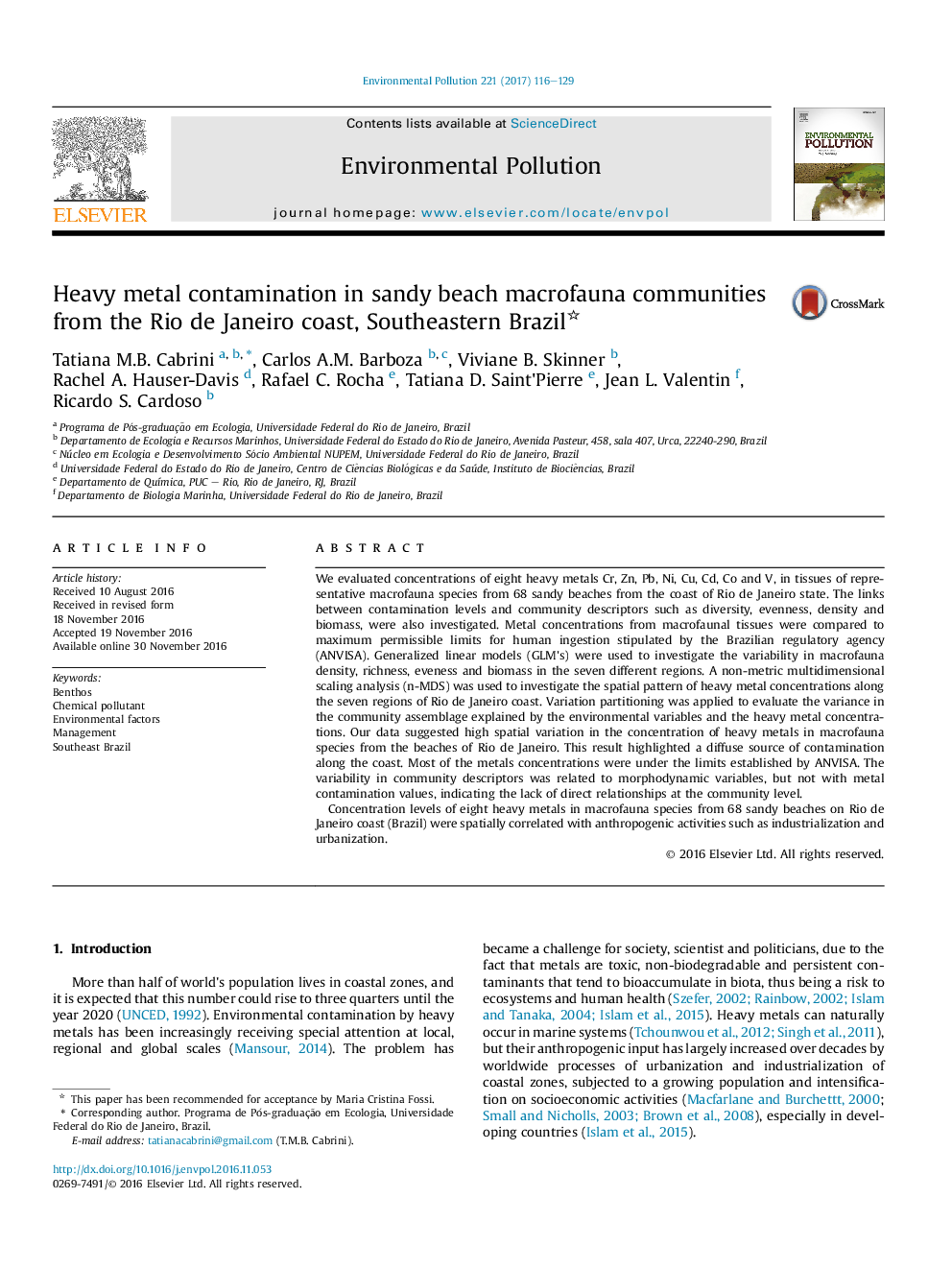| Article ID | Journal | Published Year | Pages | File Type |
|---|---|---|---|---|
| 5749456 | Environmental Pollution | 2017 | 14 Pages |
â¢Macrofauna species were used to evaluate heavy metal contamination on sandy beaches.â¢The n-MDS showed high variability in the metal contamination within each region.â¢Variations in community descriptors can be related to differences in morphodynamics.â¢Metal concentration was insufficient to ecologically damage the benthic community.â¢Multiple spatial scales in contamination is essential to understand the human impacts.
We evaluated concentrations of eight heavy metals Cr, Zn, Pb, Ni, Cu, Cd, Co and V, in tissues of representative macrofauna species from 68 sandy beaches from the coast of Rio de Janeiro state. The links between contamination levels and community descriptors such as diversity, evenness, density and biomass, were also investigated. Metal concentrations from macrofaunal tissues were compared to maximum permissible limits for human ingestion stipulated by the Brazilian regulatory agency (ANVISA). Generalized linear models (GLM's) were used to investigate the variability in macrofauna density, richness, eveness and biomass in the seven different regions. A non-metric multidimensional scaling analysis (n-MDS) was used to investigate the spatial pattern of heavy metal concentrations along the seven regions of Rio de Janeiro coast. Variation partitioning was applied to evaluate the variance in the community assemblage explained by the environmental variables and the heavy metal concentrations. Our data suggested high spatial variation in the concentration of heavy metals in macrofauna species from the beaches of Rio de Janeiro. This result highlighted a diffuse source of contamination along the coast. Most of the metals concentrations were under the limits established by ANVISA. The variability in community descriptors was related to morphodynamic variables, but not with metal contamination values, indicating the lack of direct relationships at the community level.Concentration levels of eight heavy metals in macrofauna species from 68 sandy beaches on Rio de Janeiro coast (Brazil) were spatially correlated with anthropogenic activities such as industrialization and urbanization.
Graphical abstractDownload high-res image (244KB)Download full-size image
